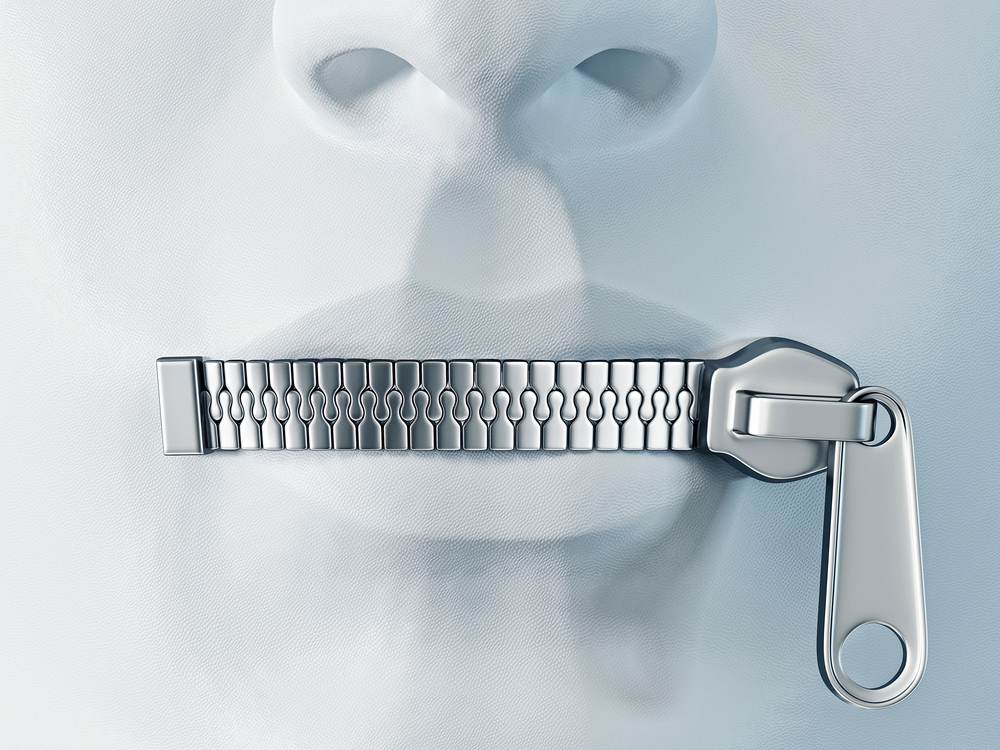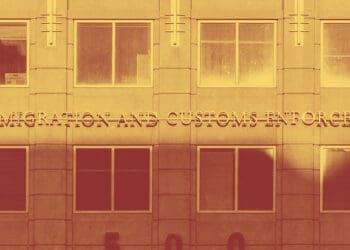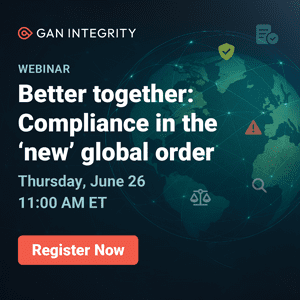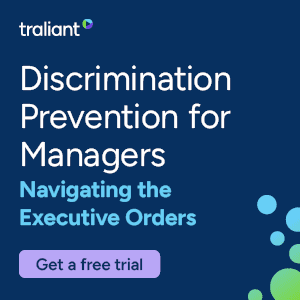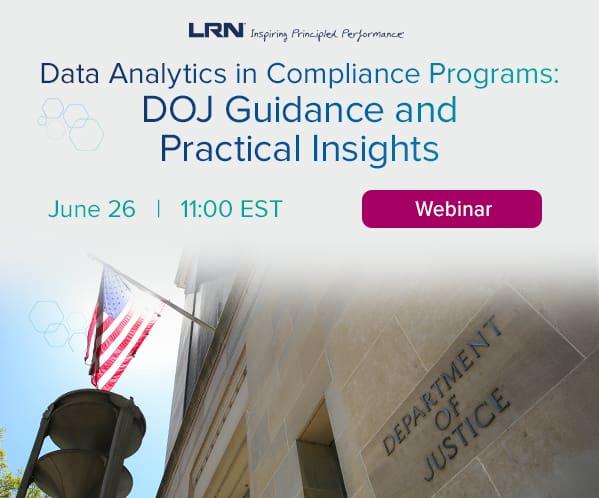Richard Bistrong interviews Organizational Psychologist Jamie-Lee Campbell. What follows is a consolidated portion of their discussion. The entire interview is available here.
RB: Hello Jamie-Lee, and thank you for taking part in our Q and A. First, perhaps you can share with our readers a little about your background and perspective?
JLC: Hi Richard, and thank you for inviting me for this Q and A. As a psychologist, I’m interested in analyzing and describing abstract patterns of behavior. While you can see and observe individual behavior, you do not see what leads individuals to do this behavior. Therefore, I use the metaphor of gears within the individual that could explain their behavior. Each gear stands for either a particular individual characteristic or situational factor that interlock with one other to result in outcome behaviors. If I can understand which gears an individual possesses, how large the single gears are, and how they are all related to each other, I can get a clearer idea why individuals behave in the ways they do. So instead of sitting on a couch all day long listening to the dreams of people as Freud did, I take a perspective on individual behavior as part of their work (as an organizational psychologist) through experiments and questionnaire surveys. The gears that are interesting in this context include: leadership, work motivation, work groups, and communication, among others.
The last four and a half years I worked on my PhD in the field of organizational psychology at the Julius-Maximilians University of Würzburg in Germany. I analyzed if and how organizational culture influences corruption on behalf of the organization. For this research I conducted a qualitative interview analysis about the characteristics of a corrupt organizational culture (see Campbell & Göritz, 2014), conducted three online experiments and one questionnaire survey (see Campbell, 2014).
Besides this research focus on corruption, I’m also a member of the German Chapter of Transparency International for which I hold several expert lectures and co-edited a special issue of their membership journal about psychology and corruption (in German language here ). Together with Johann Streudle, I founded “KorrWiss”, a German network for young corruption researchers that allows them to network and communicate in a better way (also only in German language here).
RB: Thank you, Jamie-Lee, that is quite impressive, and in your introduction you refer to corruption on “behalf of the organization.” Could you explain what you mean by that?
JLC: Sure. First of all I might share with you what definition of corruption I use. It is the one by Ashforth and Anand (2003) in which “corruption is the misuse of latitude, power, or authority to receive illegitimate or illegal benefits for single employees, group of employees, or organizations.”
Pinto, Leana, and Pil describe in a very good article in 2008 the different types of corruption within organizations. As such, they described a top-down, planned, and reward system which depicts a corruption type that benefits the organization. In such a system, employees engage in corruption in a systematic and collective manner. This type differs from the more “classical” type of corruption, in which single employees enrich themselves at the cost of their organization. I named this last type “classical” because people often refer to this form when they talk about corruption. Even more, most ethical and compliance programs (as well as research), refers mainly to this type of corruption.
RB: Jamie-Lee, I really have found your paper “Culture Corrupts! A Qualitative Study of Organizational Culture in Corrupt Organizations” (link here) to be a tremendous thought piece in the field of anti-bribery study and compliance. As you state in your introduction “we need to increase our knowledge of the factors that promote employee corruption on behalf of their organization.” Indeed, and I think your work applies to both sides of corruption, inclusive of those who give/offer and who demand/receive bribes.
JLC: Thank you! The aim of this qualitative research was to get a first glimpse of what a corrupt organizational culture looks like. Therefore, I tried to conduct general insights and then to empirically analyze if there is really an increase in corruption when employees work in a corrupt organizational culture.
RB: And was there a raise in corruption when the organization was “corrupt”?
JLC: Yes indeed. In three experiments with about 1000 German participants, I manipulated different organizational cultures (corrupt, neutral and ethical). Each participant had to decide whether he or she engages in organizational corruption as a taker. In all experiments at least twice as many participants who worked in corrupt cultures accepted a corrupt offer compared to participants who worked for other organizational cultures. However, we need to keep in mind; these are just experiments that try to come close to the reality, and the reality is more complex.
RB: You state the following: “In institutionalization, organizations use work structures that enable employees to act corruptly in their daily business, such as work routines that involve corruption. These work routines ease some employees into facilitating corruption without always becoming aware that they are doing something illegal.” Can you please explain how this could happen?
JLC: I will use two aspects that might explain why employees become less aware about their own illegal behavior.
- Institutionalization. Employees often assimilate to the norms of the organization (“we support corruption”) gradually. If single employees cannot stand to support corruption, they will leave the organization before they are responsible for important corrupt tasks. Through this gradual introduction, employees face a rather small aspect of corruption and can then learn to rationalize their own behavior. If they do this successfully they can grade up to the next step (see Ashforth & Anand, 2003).
- Ethical Blindness. Palazzo et al. (2012) describe a theoretical construct called “Ethical blindness.” The authors describe ethically blind employees as employees who are unaware of how they engage in unethical behavior. Therefore, employees can engage in actions that contradict their own moral principles. Ethical blindness helps employees to overcome their cognitive dissonance when they engage in organizational corruption. Via collective sense-making, employees could find reasons why corruption is good (as described in Campbell & Göritz, 2014) while single employees keep their moral values in private life.
RB: You quote one of your interviewees: “we have to kill to eat …the organization puts executives under extreme pressure to meet earnings targets and it is almost like the fog of war. When you are in the middle of the battle, you are trying to defeat the enemy.” This must be a sales person, as I have often used the “eat what you kill” line in my own career! So, do you think when the sales targets and incentive plans speak to “win above all else” that such “unspoken messages” can create a cocoon of corruption? In other words, how do you see this “win and war” business mentality as impacting corruption in organizations and individuals?
JLC: The process of normalizing corruption is right now just a theory but a good one! The model describes how it works and that institutionalization, rationalization and socialization causes it. However, there exists no theory about the single steps that lead to a social cocoon. Because of that, here are just a few thoughts about your point (*editors note, I have included only a few of the points, and for the complete list see the entire pdf interview):
- The perception to be in a competitive war against other organizations builds a perfect context that employees can shift their perception of corruption. In love and war everything is allowed and most humans will do anything to survive. When employees face this background and the assumption that the end justifies the means it becomes more and more difficult to withdraw from corruption.
- Corrupt organizations often set goals in the way that employees can only attain them through corruption. This could be seen as a manifestation of the “win above all else” aspect. The unspoken message is “we do not care how you attain your goals, we just want you to do it.” Therefore, the war mindset could raise employees’ acceptance of their goals even if it involves corruption.
RB: You speak of the “employee level” of corruption where your “main findings are the huge pressure employees face to attain their goals and their use of rationalization strategies.” So, Jamie-Lee, if most businesses have some pressure to succeed and grow, what are the alternative models where the business does not support coercion and corruption, but growth through ethical means and practices? Can you please share some best practices that you have seen in your own research? I think this will be very helpful to today’s front-line employees and the professionals who are tasked with helping them to manage corruption risk.
JLC: Well, sorry I cannot answer this question because my research does not focus on anti-corruption. I want to understand how corruption works, and to receive ideas about the possibilities to reduce it. Therefore, I interviewed experts about their insights in different corrupt organizations.
I would assume that it is important not only just to focus on the bottom line of financial goals but also to connect ethical values with financial goals. This goes more in the classical CSR (= corporate social responsibility) direction. However, I’m not really an expert in these terms therefore I can only refer to research on the impact of ethical behavior. Hopefully the following thought pieces could inspire some compliance officers in their work.
- Craft, J. L. (2012). A review of the empirical ethical decision-making literature: 2004–2011. Journal of Business Ethics, 117(2), 221–259.
- Treviño, L. K., den Nieuwenboer, Niki A., & Kish-Gephart, J. J. (2014). (Un)Ethical behavior in organizations. Annual Review of Psychology, 65(1), 635–660.
- Trevino, L. K., & Youngblook, S. A. (1990). Bad apples in bad barrels: A causal analysis of ethical decision-making behavior. Journal of Applied Psychology, 75(4), 378–385.
RB: Thank you Jamie-Lee, I appreciate your sharing those resources. In Organizational Culture and Leadership I think Schein speaks to the “unwritten” rules of behavior and “organizational silence.” Would you mind sharing more of your perspective on this issue?
JLC: “Organizational silence” describes how employees reduce speaking about their work tasks since they receive the feedback that no one wants their opinion (see Wolfe Morrison & Milliken, 2000). The authors describe how superiors do not want to receive any negative information about themselves or their work processes. Because the superiors do not react openly to feedback, employees reduce the amount of task-related communication and work -elated “sense-making” within their work groups.
Thus, not talking about work problems (e.g., ethical questioning of work tasks) becomes an unwritten rule, meaning a behavioral norm shared by a group of people. All group members know this rule and if one violates the norm often, the other members will punish them.
- Be sensitive! Do not underestimate the impact of organizational culture on the behavior of employees. Try to be sensitive as to what are the values of your organization. What values are connected to the reward and punishment system, what values are reinforced through the goal setting (these are the real values of your organization) and what values are not connected to anything else? Why?
- Don’t be cruel! You need to take that into account when you want to change the culture with your employees, together. If you want their commitment you need to be cautious when challenging their fundamental assumptions, values and mindsets.
- Always look at the bright side (of life)! Do not always look on the things that won’t work. Also have a focus on the departments/organizations that work ethically. Ask yourself, why are we successful there and try to transfer these conditions in the challenging departments/organizations
RB: So Jamie-Lee you said you are at the end stage of your PhD. What are you planning to do next?
JLC: I will have the final exams in May 2015. Afterwards, it would be very interesting to engage in research on the influence of corruption on international security (here a first position paper of Transparency International this time in English language here.)
For example, how military interventions in Afghanistan support petty and structural corruption and in turn finance warlords, etc. I think it’s important to know more about how any mission (governmental, non-governmental or military) could involuntarily support corruption within a country. And in turn how such institutions could work safely when they reduce their support of corruption. So we will see where I find a place to have a closer look at this.
RB: Thank you Jamie-Lee


